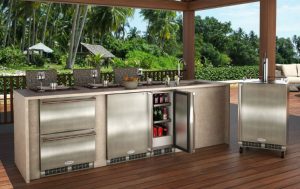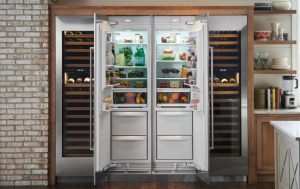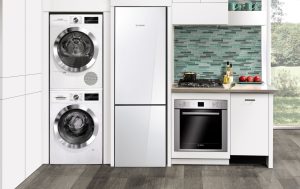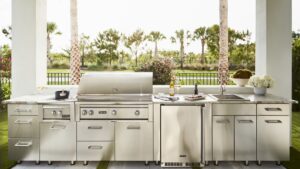Tips for Finding the Best Washing Machine for Your Home
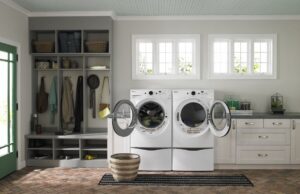
If your current washing machine is on its last spin cycle, it may be time to invest in a new model. With so many options on the market, choosing the right washer for your needs and budget can get overwhelming fast. To help streamline your search, here is a guide covering key factors to consider when shopping for the best washing machine.
Let’s explore efficiency ratings, capacity and dimensions, top vs front loading models, special features, connectivity options, and installation considerations. Also space constraints, noise reduction needs, or smart home integration desires.
Assess Your Laundry Habits and Household Size
Take stock of how your household utilizes your current machine:
- Laundry frequency – Loads per week
- Typical load sizes – Light, medium, large
- Must-have cycles – Delicates, sanitizing, etc.
- Special care items – Handwash only clothes, bulky bedding
- Noise tolerance – Shared walls? Near bedrooms?
- Space available – Width, depth, height limitations
This information helps narrow suitable washer types, capacities, cycles and sound dampening needs. If your family is growing, anticipate that the future laundry demand will also grow.
Top Load vs Front Load Washing Machines
The two main washer configurations have distinct pros and cons based on your laundry room layout.
Top Load
Top-loaders offer easy access with no bending down to load/unload. Larger capacities mean fewer loads overall. However, top-loaders require more water usage typically.
Front Load
Front -loaders use less water and it is more energy efficient. Some models are stackable, additional storage space underneath if on a pedestal and some offer optional steam sanitation feature.
Evaluate Efficiency Ratings
With the rising utility costs and being eco-conscious, it pays to buy the most energy-saving washer possible. Here are two key ratings to check:
1. ENERGY STAR Certification
ENERGY STAR washers meet the strict energy-efficiency specifications set by the U.S. EPA, thus use less energy.
2. CEE Tier Ranking
Consortium for Energy Efficiency tier ranking is a rating system to measures and rates the energy performance of appliances:
- Tier 1 = Equivalent of a standard ENERGY STAR rating (meets minimum requirements for efficiency)
- Tier 2, 3 and 4 = They are all in the range of ENERGY STAR’s “Save More” standards
Optimize Capacity to Future Laundry Needs
Household size plays a key role in determining washer capacity. Make sure to measure the total tub volume in cubic feet, not just the exterior machine dimensions. Here’s a rough guideline:
- 1-2 people – 3-4 cu ft capacity
- 3-4 people – 4.5-5 cu ft capacity
- 5+ people – 5.5-6 cu ft capacity
It is not recommend to max out capacity if you do smaller mixed loads often. Too much drum space can lead to inefficient water and detergent usage on light loads. But some larger families do require heavy duty 6 cu ft washers to finish mountains of laundry in fewer cycles.
Compare Special Features and Connectivity
Beyond basics, modern washers offer buyers more features such as specialty cycles and tech-enabled conveniences:
- Steam cycles to naturally loosen stains
- Sanitize/allergen modes killing microbes
- WiFi connectivity for remote status checks/control
- Detergent pod dispensers simplifying laundry
- Vibration damping for significantly quieter operation
Benefit of having a WiFi connectivity in washers is that you can confirm cycles when finished and have notifications sent to you when something requires intervention like leaving laundry in too long.
Prep Your Laundry Room for Smooth Installation
Don’t wait until delivery day to ensure your laundry room meets minimum washer requirements:
- 1 inch clearance sides/rear
- 3 feet pipe access
- Electrical: 110-120 volt outlet
- Level flooring: Max 1 inch slope
- Doorways wide enough for machine entry
- Drain hookup or standalone drain pan (2nd floors)
- Hot and cold water lines with shutoff valves
- Dryer hookups if combining units
Carefully measure your current space including width/depth/height accounting for non-removable protrusions. This ensures you finding compatible washers, including place for ventilation/airflow around. Don’t forget to factor in pedestals too if you want your front loader elevated higher.
Finding your perfect washing machine to meet your budget with efficiency, capacity, features, connectivity and space factor can initially seem overwhelming. But taking it step-by-step using these tips should help you select the ideal washer for you and your family and do laundry effectively for years to come while saving energy, water, and money over time.
- Designing the Ultimate Outdoor Bar: Must-Have Appliances for Year-Round Fun
- Luxury Refrigerator Guide 2025: Built-In vs. Freestanding and What to Know Before You Buy
- How Smart Appliances Are Changing Luxury Kitchen Design in 2025
- The Ultimate Outdoor Grill Guide for 2025: Built-In vs. Freestanding
- Smart Bathroom Faucets & Fixtures in 2025: Blending Technology with Luxury Design
- Built-In Coffee Machines: Are They Worth It for Your Kitchen in 2025?
- How to Choose the Right Dishwasher for Your Home: Noise, Capacity, and Features Explained
- Top 5 Kitchen Appliance Colors and Finishes for 2025 (And How to Match Your Style)
- Why a Countertop Ice Maker is a Must-Have for Summer Kitchen Upgrades in Southern California
- How to Remove Scratches from Stainless Steel Luxury Appliances


